
Best Cities to Visit in Mexico: My Top 20 Choice For 2024
Best Cities to Visit in Mexico: My Top 20 Choice For 2024
One out of every four American cities declared a World Heritage Site by UNESCO is Mexican, which highlights the beauty of Mexico’s metropolises, the fourth nation in the world with the most recognition for the importance of its physical and spiritual heritage.
From the sun-soaked beaches of the Riviera Maya to the culturally rich streets of Mexico City, this guide is your passport to the most captivating destinations in the country.
Whether you crave historical marvels, culinary delights, or natural wonders, Mexico offers an array of experiences that will enchant you.
Although selecting the most beautiful cities to visit in Mexico is challenging, I have chosen the ones I consider best. It is now up to you to decide.
Top 20 Most Beautiful Cities to Visit in Mexico
1. San Miguel de Allende, Guanajuato

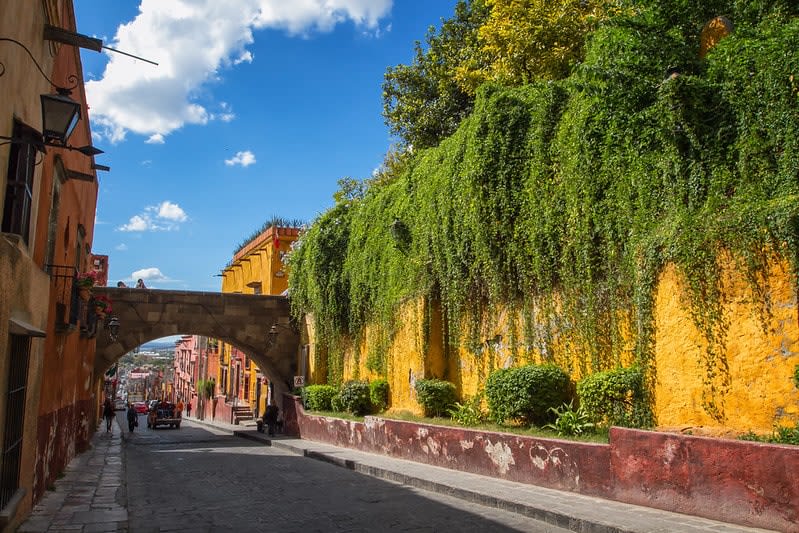
More picturesque, impossible. San Miguel de Allende still holds the number one title for the most beautiful town in Mexico.
Its magical atmosphere of beautiful colonial civil and religious buildings gives Guanajuato’s San Miguel de Allende, declared a World Cultural Heritage Site in 2008, the privilege of topping this list.
The architectural icon of the town is the temple of San Miguel de Allende, a church with an imposing neo-Gothic facade with paintings in its interior decoration by Juan Rodriguez Juarez and other artists.
Read the full guide for San Miguel de Allende
In front of the main square is also the Casa del Mayorazgo de la Canal, built at the beginning of the 19th century by the wealthy mining landowner, Manuel Tomás de la Canal. It is distinguished by its superb baroque details of Italian and French styles.
Another site that embellishes the city of San Miguel de Allende and shows its history is the Cultural Center Ignacio Ramirez “El Nigromante.”
Inside this building, the mural of Siqueiros, Life and Work of the Generalissimo Ignacio de Allende, the Parish and Convent of the Immaculate Conception, and the Casa de Allende Museum stand out.
San Miguel de Allende is one of the few Mexican cities that most attracts foreigners to live in, for its mix of beauty, tranquility, and security.
2. Guadalajara, Jalisco

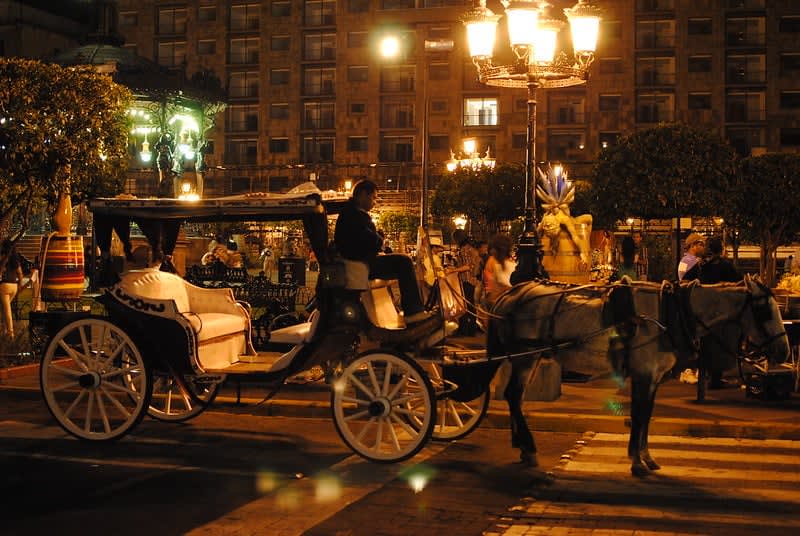
Despite being the second most populated Mexican city, Guadalajara retains the charm of Mexico’s small towns, without renouncing the impositions of modernity.
The architectural landscape of Guadalajara is dominated by the cathedral basilica dedicated to the Assumption of the Blessed Virgin Mary.
The Degollado Theater inaugurated in 1866 is another architectural jewel of the capital of Jalisco.
The Minerva traffic circle, with the statue of the Roman goddess of wisdom, adds to the emblematic monuments of Guadalajara.
The local artisans work the clay in all the modalities (burnished, flag, engretado, canelo and petatillo), making pieces of adornment and of daily use for the home.
Read the full guide to Guadalajara, Mexico
Guadalajara has numerous typical restaurants where they serve frijoles charros, birrias, carne en su jugo, tortas ahogadas, pozoles, enchiladas and other delicacies of the local cuisine.
Mexican folkloric music and tequila are regular protagonists of the nightlife in Guadalajara, making this capital a cheerful and vibrant city.
3. Oaxaca de Juárez, Oaxaca

The capital of Oaxaca is another city marked by the beauty of its colonial buildings, complemented by its pre-Hispanic past, one that earned it the recognition of Cultural Heritage of Humanity.
The Basilica of Nuestra Señora de la Soledad, built with beautiful regional stone of yellow and greenish tones, stands out for the religious sculptures in its façade niches.
The temple and former Santo Domingo de Guzmán convent is a beautiful baroque complex distinguished by the parish façade and the altarpieces inside.
The Santo Domingo convent houses a museum that includes pre-Columbian artifacts.
The Macedonio Alcalá Theater is a beautiful expression of Oaxacan Art Nouveau architecture.
It began as a casino and now has a splendid French-style lobby and a sumptuous hall for more than 600 spectators, including Empire-style boxes.
Read more about Oaxaca City
Near Oaxaca city is Monte Albán, the most important Zapotec archeological site in the state that preserves the ruins of El Palacio, El Observatorio, Palacio de Ocote, Edificio de los Danzantes, and Patio Hundido.
4. Guanajuato City: One of the best cities to visit in Mexico


The first time I visited Guanajuato city I was impressed. There’s this tunnel that you need to drive or walk through to get to the heart of town.
And after you exit the tunnel it’s like you just traveled back in time. Simply mesmerizing.
The winding, cobblestone, and romantic streets of Guanajuato invite you to take a stroll. Its climate and charming atmosphere make it one of the most beautiful cities in Mexico to visit.
In its historic center stands out the Collegiate Basilica of Our Lady of Guanajuato with its baroque and neoclassical styles, whose wooden image was the first to be brought to the New World from Spain.
In its interior, there is an organ with over a thousand pipes.
The Juarez and Cervantes theaters are other gems of Guanajuato. The first was inaugurated in 1903 with Verdi’s opera, Aida, a performance attended by the former president, Porfirio Diaz.
The Cervantes Theater was built in 1979 and is the main venue for the Cervantino International Festival, an important cultural celebration that attracts thousands of travelers to the city every October.
Other Guanajuato festivities include the International Organ Festival, the Day of Flowers (the last Friday of Lent), and the Medieval Festival.
Read the full guide to visiting Guanajuato City
Guanajuato is a land of legends and any local will tell you about the girl who asked to be changed from her grave, the Llorona or the Callejón del Beso.
5. Puebla City, Puebla
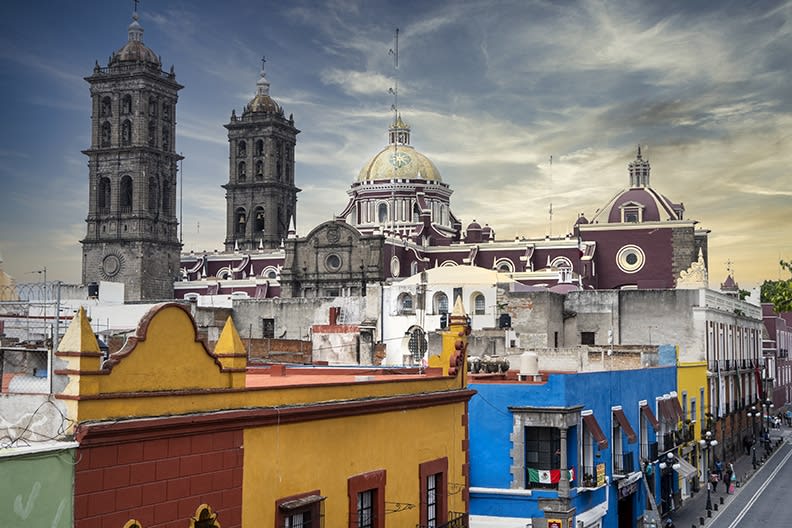
Puebla will always be at the top of any list of Mexico’s most beautiful cities, for its beautiful churches and monuments, artisan traditions, and rich gastronomy.
The Cathedral Basilica of Puebla is a World Heritage Site and preserves one of the richest collections of religious art in Mexico.
The 17th-century Palafoxiana Library was the first public library in the New World, with furniture made of cedar wood.
Puebla’s neighborhoods like Analco and El Artista are spaces where the city life throbs, through its artistic street expressions and spirit of pre-Hispanic, viceroyalty, and contemporary features.
The local artisans have made Talavera a ceramic art that has transcended the borders of the state and the country, with their delicate pieces decorated in blue.
Dishes such as mole poblano and chiles en nogada are gastronomic emblems of Puebla and Mexico.
6. Merida, Yucatan


Mérida shines for the beauty of its architecture and cultural vocation, which make it one of the best cities to visit in Mexico.
Its main avenue, Paseo de Montejo, was built between the end of the 19th and the beginning of the 20th century, in the image of a French boulevard.
The wealthy henequen landowners built their mansions along the boulevard, where leafy groves were also developed and gazebos and monuments were installed, such as those dedicated to the revolutionary leader, Felipe Carrillo Puerto, and the writer and historian, Justo Sierra O’Reilly.
In front of Paseo de Montejo is the impressive Cantón Palace built at the beginning of the 20th century as the residence of the Yucatecan governor, Francisco Cantón Rosado.
After being sold in 1932 to the regional government it was converted into the official residence of the governors of Yucatán, until 1966 when it became the home of the Regional Museum of Anthropology.
Mérida is full of cultural centers and museums, which in 2000 earned it the designation as American Capital of Culture.
7. Mexico City, of course

The fast pace of life makes us forget or overlook the beauty of Mexico City.
The nation’s capital is home to some of the most important historical and architectural attractions, headed by the Templo Mayor, the Basilica of the Virgin of Guadalupe, the Palace of Fine Arts, and the Angel of Independence.
The most prominent museums in Mexico City are:
- National Museum of Anthropology
- Soumaya Museum
- Museum of Modern Art
- Frida Kahlo Museum
- Tamayo Museum
- Papalote Children’s Museum
- Museum of Natural History
Several of these are in the majestic Chapultepec Forest, the largest natural and urban space in the American continent, which also houses the Chapultepec Castle, the National History Museum, and the fantastic Mexico City Zoo.
Learn more about Mexico City’s Museums
In the beautiful neighborhoods of Roma and Condesa are the most exclusive restaurants, bars, galleries, and stores in the city.
San Jeronimo and Coyoacan, preserve their colonial, artistic, and cozy touch amid modernity.
8. Zacatecas City
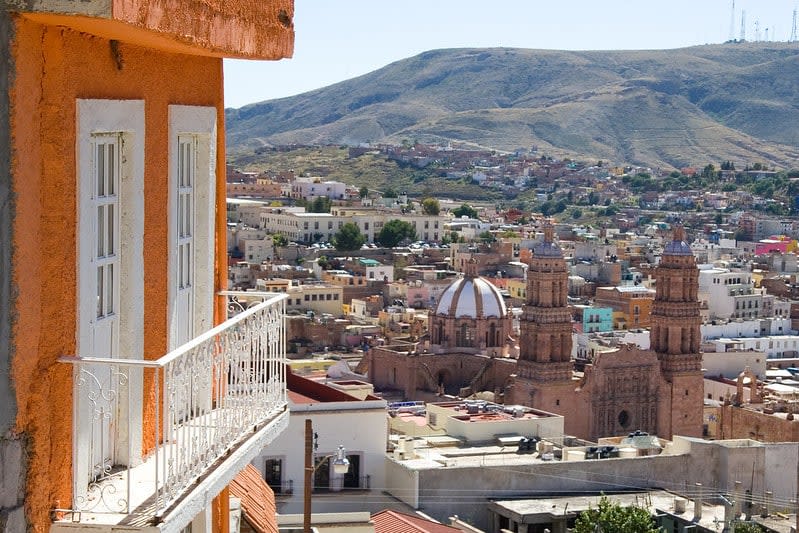
Zacatecas is dubbed “the city with the quarry face and silver heart” and developed in the middle of the 16th century, thanks to the rich seams of this precious metal found by conquistador Juan de Tolosa.
The Zacatecas mines became the most productive in the country and thanks to this wealth, a beautiful historic center was built, which in 1993 was declared a World Cultural Heritage Site.
A cable car connects Cerro de la Bufa with the Eden Mine, offering magnificent city views.
Hidalgo Avenue runs through Zacatecas from north to south and is one of the most elegant in the country, with its colonial buildings, mansions, and squares built during the viceroyalty and the Porfiriato.
Zacatecas is dotted with parks and gardens that embellish the city with their greenery, such as the Parque Arroyo de la Plata, the Alameda José Trinidad García de la Cadena, and the Juárez, Independencia and Niños Héroes gardens.
9. Santiago de Querétaro, Querétaro

Querétaro has experienced some of the most important events in Mexico’s history, such as the conspiratorial movement precursor to Independence, the execution of Maximilian in 1867, the constituent process of 1917, and the founding of the PRI in 1929.
The temple and ex-convent of San Francisco de Asís and the Casa de la Corregidora, the seat of the state executive power, stand out in these first blocks of Querétaro for their beauty and historical value.
In the Teatro de la República the national anthem was interpreted for the first time in 1854.
It was also where Maximilian was tried and the current Constitution was deliberated.
The Aqueduct of Queretaro is a World Heritage Site and another viceregal jewel from the first third of the 18th century, with its 74 arches rising to almost 9 meters.
Querétaro is traveled by the QuereBús, a modern and picturesque streetcar that is another reason “La Ciudad Constituyente” is one of the most visited non-beach destinations in Mexico.
10. Monterrey: The best northern city to visit in Mexico


Monterrey residents and visitors enjoy the tradition and avant-garde of “La Sultana del Norte,” a city where a livestock show and technology fair coincide on the same day.
Followed by Guadalajara, Monterrey is the third most populated city in Mexico and the second most economically important.
Monterrey is known as “The Industrial Capital of Mexico”.
Its attractions combine history and modernity. In its historic center, buildings such as the Old Quarter, the Cathedral of the Immaculate Conception, and the Palace of the Bishopric stand out.
The modern architectural icons are the Torre Ciudadana, the Torre Pabellón Monterrey, the Puente de La Unidad, the Parque Fundidora, and the Monumento a Las Banderas.
The geographical emblem of the city is the Cerro de la Silla with its 4 peaks, a natural monument frequented by hikers and excursionists.
Monterrey is also the capital of norteño music and you can hear corridos to the rhythm of accordions everywhere you go.
11. Aguascalientes: Home of the San Marcos Fair


The territory that pleasantly surprised the conquistadors with its hot springs, is now a harmonious unit of classic architectural jewels with modern constructions, embellishing the landscape while hosting the great annual festival: The San Marcos Fair.
This festivity is so popular in the country that it is called “The Fair of Mexico.”
The first was held in 1828 and features the most important bullfighting billboard in America in an 1896 arena, one of the oldest in the nation.
The San Marcos Fair is held between April and May and is much more than just a bullfighting festival.
It also has rodeo competitions, palenques, musical shows, livestock exposition, cultural events, gastronomic fairs, and other attractions.
Read the full guide about Aguascalientes
The “City of Good People” has interesting museums such as the José Guadalupe Posada Museum, the Escarcega Museum, and the National Museum of Death, the latter attached to the Autonomous University of Aguascalientes with works of art and objects related to the Grim Reaper.
12. San Luis Potosi
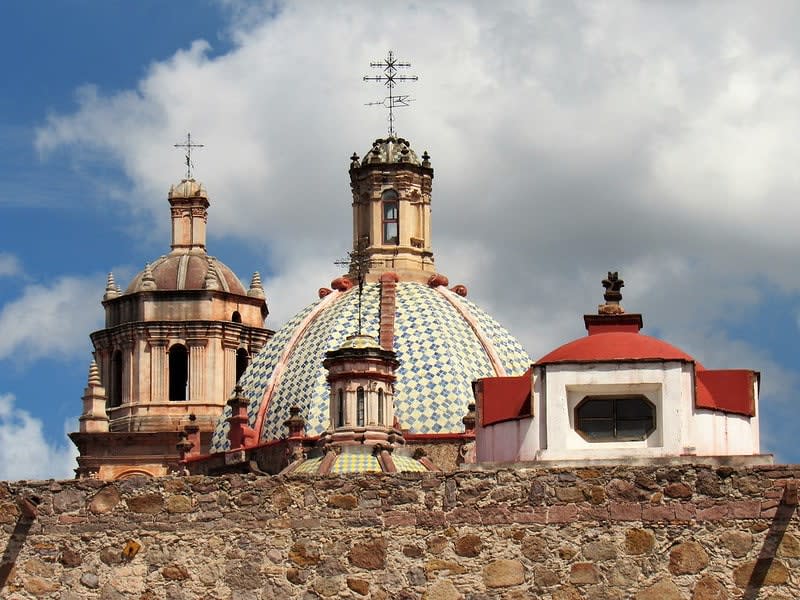
Like most major Mexican cities, the historic center of San Luis Potosi is full of civil and religious architectural jewels.
Among the mystical constructions is the cathedral, where the Virgen de la Expectación, San Sebastián, and San Luis Rey are venerated.
The civil buildings of “The City of Gardens” are presided over by the Government Palace, the Viceroyalty Museum, the Real Caja, the Casa de la Virreina, the Teatro de la Paz, and the National Mask Museum, the most important of its kind in Mexico with a sample of 1,300 national and international pieces.
The city also has beautiful gardens, parks, and squares, such as the San Juan de Dios, San Francisco, and Colón gardens and the Plaza de Armas, Plaza de los Fundadores, and Plaza de España.
The famous Huasteca Potosina, in the state of San Luis Potosi, is an immense green space of valleys, mountains, rivers of crystalline waters, and beautiful waterfalls.
13. Morelia, Michoacan


Dubbed “The City of the Pink Quarry,” Morelia is another beautiful city to visit in Mexico, especially for the dashing pink color of the buildings of its impressive historic center: Cultural Heritage of Humanity since 1991.
Its civil symbol is the aqueduct of the colonial era, a superb construction begun in the XVI century whose main part, still in force, dates from the XVIII century.
The religious emblem of Morelos is the cathedral, a majestic work of baroque style with 2 towers of 70 meters and an interior dominated by Doric decoration.
It preserves artistic gems such as the baptismal font and the silver manifester, the neoclassical altarpieces, and a monumental organ with 4,600 flutes.
The monument to Morelos, a patriot born in the city and after whom it is named, and the Clavijero Cultural Center, housed in a former Jesuit monastery, are two other impressive attractions in Morelia.
Learn more about Morelia Michoacan
The gastronomy of Morelia is a fusion of pre-Hispanic Purepecha cuisine and Spanish culinary art, with delicacies such as morisqueta, aporreadillo, uchepos, churipo, and chongos zamoranos.
14. Cozumel, Quintana Roo

The capital of Mexico’s main tourist island captivates with its splendid ocean views.
As many of you might know, Cozumel boasts wonderful reefs and beaches such as El Cielo, Palancar, Dzul Ha, Paraiso, Colombia, Villa Blanca, Santa Rosa and Chankanaab.
Cozumel is the epicenter of the island’s vibrant nightlife with many places to dance and enjoy your favorite tropical cocktail.
At the archaeological site of San Gervasio, you can learn about the Mayan achievements on the island and Ix Chel, the main goddess of the famous civilization.
The best way to explore and get around Cozumel is by scooter. You can rent one in the many bike shops in the Island.
15. Puerto Vallarta, Jalisco
Among Mexico’s best cities to enjoy a beach vacation, Puerto Vallarta is one of the best choices. It is also a good place to live (I live here).
A stroll along its almost one-kilometer-long boardwalk allows you to admire large-scale works of art and enjoy street art shows.
People converse animatedly while enjoying their favorite drinks and food in the cafes and restaurants in front of the breakwater.
Despite its name, the liveliest beach in PV is Playa de los Muertos, always stimulating for the joy of bathers practicing water sports, eating, and drinking in its bars and restaurants.
On the beaches of Puerto Vallarta, you can have fun paragliding, jet skiing, banana boating, practicing beach volleyball, and sea activities.
You can also sign up for ecological activities such as turtle release.
The Malecon and Playa de los Muertos mark one of the boundaries of the Romantic Zone of PV, which is Old Vallarta with its traditional houses, cafes, and cozy hotels.
16. Tequila, Jalisco


The town that bears the name of the national drink, Tequila, stands out for its material heritage and spiritual traits, being one of the most beautiful cities in Mexico.
Its population of less than 50 thousand inhabitants makes this Magical Town a place that preserves the charms of the past, with the comfort of modernity.
As you can imagine, everything here revolves around Tequila, which, according to a pre-Columbian legend, originated when lightning set fire to agave plants and cooked their “pineapples,” from which the indigenous people extracted an intoxicating liquid that they believed was a gift from the gods.
Among the things to do in the city, you can visit the National Tequila Museum, which offers a walk through the history of the distillate.
In this Magical Town, there are interesting buildings such as the Municipal Palace, the Church of the Purísima Concepción, and the centennial public washing places.
17. Veracruz Puerto


The “Gateway to America,” Veracruz, fought the Spanish, French and on two occasions, the Americans, deservedly earning the title of “Four Times Heroic.”
Historical sites such as the Cathedral of the Virgin of the Assumption, the Santiago Bastion, Las Atarazanas, the fortress of San Juan de Ulua, the Church of the Christ of the Good Voyage, and the Portal of Miranda, have perpetuated the viceregal atmosphere and the time when the city was besieged by pirates and corsairs.
On its beaches such as Boca del Río, Antón Luzardo, Mocambo, and Isla de los Sacrificios, you will find calm waters, fine sands, aquatic entertainment, and the delicious Veracruz cuisine.
The gastronomic art of Veracruz offers delicacies such as fish a la veracruzana, arroz a la tumbada, caldo “vuelve a la vida,” chilpachole de jaiba, tortitas de hueva de lisa, ostiones a la diabla and pulacles.
18. San Francisco de Campeche


San Francisco de Campeche shines with its boardwalk, baroque buildings, forts, archaeological sites, petenes, dances, and unique gastronomy, being one of the best places in Mexico for vacationing.
The colonial mansions with Moorish reminiscences, the cathedral, and the walls built as protection against pirate attacks, make Campeche a treasure of Mexican colonial architecture.
Read more about Campeche
Campeche was attacked by the most famous pirates of the past, such as Drake, Morgan, and Hawkins, making it one of the few American walled cities.
The petenes are curious islets of vegetation formed by the meeting of fresh and salt waters providing vitally rich ecosystems.
Near the city are archaeological sites such as Edzná and Jaina, places where the Mayas exhibited their great constructive talent by erecting settlements in soils of high humidity.
The beauty of Campeche’s choreographic and musical manifestations is unmatched, as evidenced by the Jarana de 6×8, El Zarandeo, Los Chancletistas, the Son del Pavo, and other typical expressions.
19. Patzcuaro, Michoacán

Life in the pleasant Town of Patzcuaro is developed around its beautiful lake with 7 islands, full of landscapes, ancestral traditions, archeological sites, and good fishing.
On the shores of the lake are archaeological sites such as Tzintzutzan and Ihuatzio, where you can appreciate interesting signs of Purepecha culture, as well as restaurants where you can taste white fish, charal, or other fresh lake species.
The main tourist island is Yunuen, with a well-equipped vacation center.
The Vasco de Quiroga Square, the most important of Patzcuaro, is one of the widest and most beautiful in Mexico, surrounded by the City Hall building, the Huitzimengari Palace, the Casa del Portal Chaparro, the Casa del Gigante, and other beautiful mansions.
In the sober and ancient temple of San Francisco, there are interesting oil paintings and an image of Christ made of corn cane paste from the XVI century.
20. Valladolid, Yucatán

The “Sultana de Oriente,” Yucatan’s third most populated city with over 50k people, was declared a Magical Town in recognition of its colonial elegance and the beauty of its natural spaces, headed by its cenotes.
The Church of San Servacio has the unusual architectural attribute that its main façade faces north and not west, as required by the Catholic rule for the construction of temples.
Other religious buildings that embellish Valladolid with their colonial architectural lines and ornamentation in various styles are the Temple and ex-convent of San Bernandino de Siena and the churches of Santa Lucia, San Juan, and La Candelaria.
Among the civil architectural attractions are the Calzada de los Frailes, the Palacio Municipal, the Casa Cantón, the Museo de San Roque, and the Parque de los Héroes.
In Valladolid, there are charming cenotes such as Zací and XKekén. The Mayan archaeological site of Ek Balam is 28 km to the north.
What is the most beautiful state in Mexico?
Many will say Quintana Roo for its beautiful beaches. Others will say Jalisco because of the mariachi, charros, and tequila.
If you enjoy waterfalls and green spaces, I will put San Luis Potosi ahead, with its Huasteca Potosina.
If you prefer infinite and vertiginous spaces, then Chihuahua and its Barrancas del Cobre go first place.
Fans of surfing beaches and good food in front of the sea will probably think of Nayarit, while those who believe that beauty is in the architecture will perhaps point first to Yucatán for Chichén Itzá and Valladolid.
If you love fishing, I would think of Baja California and Baja California Sur, bathed by the Sea of Cortez and the Pacific.
While if your thing is the beauty and flavor of Mexican gastronomic art, you might prefer Puebla for its moles and chiles en nogada.
We could go on and on to complete Mexico’s 32 federal entities. So, which is your favorite state?
Best Cities to Visit in Mexico: Final thoughts
As you have seen, Mexico has fantastic beaches, mountains, jungle, valleys, rivers, waterfalls, estuaries, deserts, and archaeological and colonial sites, to enjoy dream vacations, with cities and towns that guarantee comfort and services for national and international tourism.
From the ancient wonders of Chichen Itza to the vibrant art scene of Mexico City, each city on this list has something unique and exciting to offer.
Whether you’re a history buff, a foodie, a beach lover, or an art enthusiast, Mexico has a city for you.
So pack your bags, brush up on your Spanish, and get ready to explore the wonders of this beautiful country. ¡Viva México!